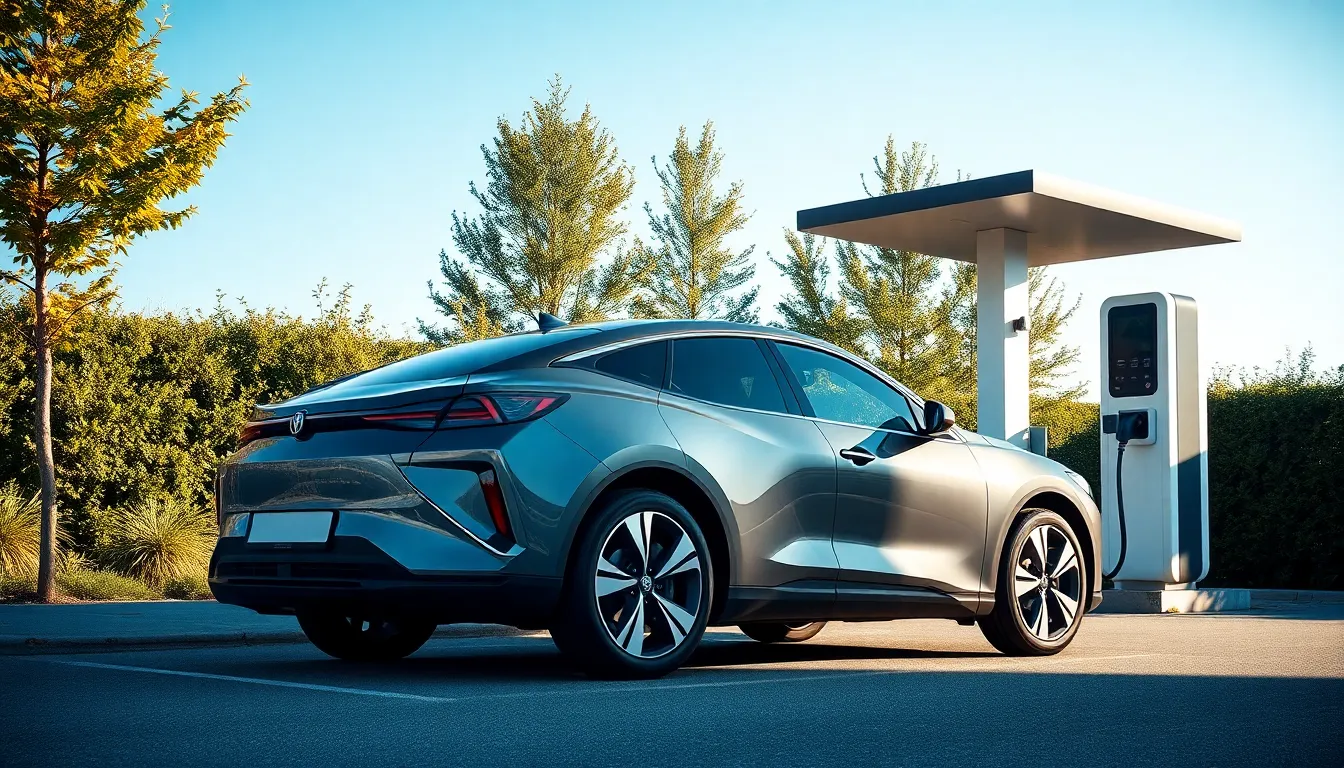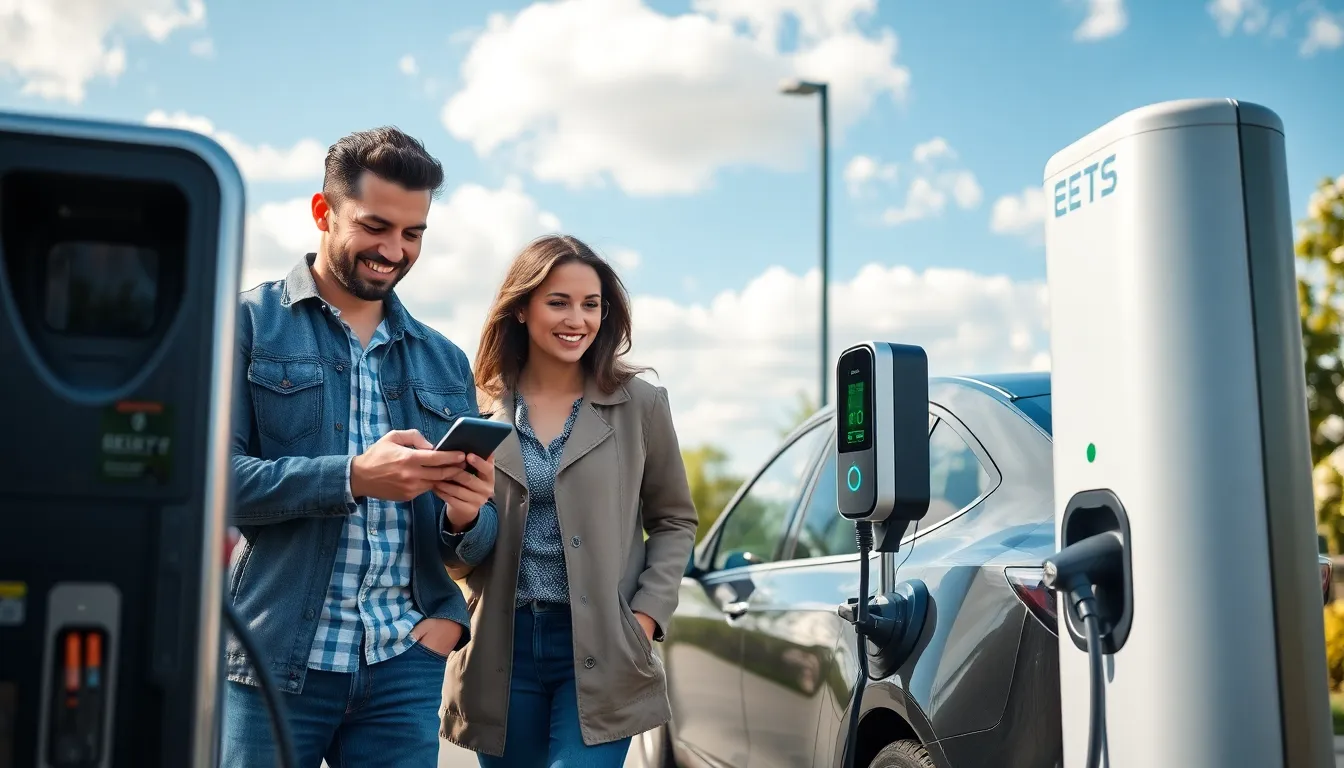In a world where gas stations are slowly becoming relics of the past, electric vehicles (EVs) are zooming into the spotlight, promising not just a cleaner ride but a whole new driving experience. Imagine gliding down the road, feeling like the captain of a silent spaceship while your neighbors are still stuck in their noisy combustion engines. It’s time to explore what makes the EV user experience not just different but downright exhilarating.
From the moment you press that silent start button to the joy of one-pedal driving, EVs offer a unique blend of technology and convenience. Whether it’s the thrill of instant torque or the satisfaction of charging at home in your pajamas, the electric vehicle experience is transforming how people think about driving. Buckle up as we dive into the quirks and perks of life behind the wheel of an electric car.
Table of Contents
ToggleOverview of Electric Vehicle User Experience
Electric vehicles (EVs) redefine user interactions with transportation. Drivers experience enhanced convenience with home charging, which eliminates the need for frequent visits to gas stations. Features such as quiet operation and instant torque contribute to an exhilarating driving experience.
User interfaces in EVs often prioritize intuitive design, allowing easy navigation through various functions. Connectivity options, including smartphone integration, streamline access to navigation and entertainment. Drivers appreciate the real-time data displaying battery status and range, which helps in planning longer trips.
Charging infrastructure has improved significantly, with increasing availability of public charging stations. Many cities are investing in fast-charging networks to support the growing number of EVs on the road. This development eases concerns about the distance one can travel on a single charge.
Regenerative braking systems allow drivers to extend their vehicle’s range by converting energy back into the battery. Comfort features, such as spacious interiors and advanced climate control systems, enhance the overall travel experience. Moreover, safety technologies, including automated driving assistance, create an added layer of confidence for users.
Sustainability is an essential aspect of EVs, with many drivers valuing the positive environmental impact. The smooth acceleration and reduced emissions align with a modern, eco-friendly lifestyle. EV users often report satisfaction stemming from newfound energy efficiency and lower maintenance costs, further enhancing the appeal.
By combining innovative technology and environmental benefits, electric vehicles ensure a user experience that is not just functional but also enjoyable.
Key Factors Influencing User Experience

Various factors shape the experience of electric vehicle users, making it distinct and fulfilling. Understanding these key influences enhances the overall perception of EVs.
Vehicle Design and Comfort
Innovative vehicle designs prioritize user comfort and functionality. Spacious interiors accommodate passengers and cargo effectively. Quiet operation contributes to a serene driving atmosphere. Ergonomic seating boosts long-distance comfort. The use of high-quality materials elevates the perception of luxury within EVs. Aesthetic appeal also plays a role, as modern designs attract a broad range of consumers. Integrating ample storage solutions and intuitive layouts enhances everyday usability.
Technology Integration
Advanced technology improves user interaction with electric vehicles. Intuitive interfaces streamline navigation and media access. Smartphone connectivity allows seamless integration with personal devices, enabling control over various vehicle functions. Real-time data on battery status and range assists in confident trip planning. Voice recognition systems support hands-free operation, ensuring safety while driving. Features like over-the-air software updates enhance vehicle performance over time. Together, these technological advancements create a more engaging and efficient driving experience.
Charging Infrastructure
Robust charging infrastructure directly impacts user convenience and satisfaction. The expansion of public fast-charging networks alleviates concerns about long-distance travel. Home charging solutions offer ease of use, allowing users to recharge overnight. Charging speed significantly influences the ability to quickly resume travel. Availability of charging stations at workplaces and shopping areas increases accessibility. Users appreciate clear mapping of charging locations, helping to minimize trip interruptions. Such developments cultivate confidence among EV owners regarding their mobility options.
User Feedback and Satisfaction
User feedback plays a crucial role in shaping the electric vehicle experience. Many drivers express high satisfaction levels, driven by several positive experiences.
Positive Experiences
Enhanced acceleration captivates users immediately. Instant torque generates responses that exceed expectations. Quiet operation contributes to a serene driving ambiance. Interior space provides comfort and practicality, a stark contrast to traditional vehicles. Features like smartphone connectivity allow seamless integration with personal devices. Advanced infotainment systems enrich travel with entertainment and information. Users appreciate improvements in regenerative braking, which not only extends battery life but also adds a unique driving skill. Public charging networks become more accessible, granting peace of mind on longer journeys. Overall, users frequently report a sense of excitement and fulfillment since switching to electric vehicles.
Common Challenges
Despite positive feedback, challenges persist for electric vehicle users. Limited charging options still create anxiety for some drivers during longer trips. Charging times can vary significantly across stations, leading to frustrations. Notably, range limitations occasionally restrict trip planning for those in remote areas. Inconsistent charging network reliability remains a concern for many owners. Some users experience difficulties with software updates that occasionally disrupt device connectivity. Availability of service and repair facilities can also cause headaches for electric vehicle owners. A small percentage of drivers cite concerns over battery longevity and replacement costs. These issues highlight the need for continued advancements in the electric vehicle sector.
Future Trends in Electric Vehicle User Experience
Advancements in electric vehicle user experience focus on personalization and seamless integration of technology. Automakers plan to enhance in-car infotainment systems, ensuring they provide tailored features based on user preferences and driving habits. Development of artificial intelligence aims to create more intuitive interfaces that adapt as drivers use their vehicles.
Additionally, enhanced connectivity will play a crucial role. Future EVs expect to integrate with smart home devices, allowing users to monitor and control their vehicle’s status remotely. This connectivity ensures convenience with features such as scheduling charging sessions based on lower electricity rates.
Charging technology advances lead to a streamlined experience, as manufacturers work on ultra-fast charging solutions. Some envision charging times reducing to just a few minutes, making long road trips more feasible. Expanding charging networks will alleviate range anxiety. Multiple companies are already investing in fast-charging stations at strategic locations.
Moreover, user feedback becomes integral in crafting future designs. Automakers increasingly seek opinions about comfort, functionality, and desired features. This dialogue ensures that vehicles align with user expectations, leading to higher satisfaction levels.
Safety and sustainability also gain attention in upcoming designs. Innovative driver-assistance systems promise to further enhance user confidence on the road. Environmentally friendly materials within vehicle interiors target consumers seeking sustainable options.
As the electric vehicle landscape evolves, the emphasis on improving user experience becomes clearer. Collaboration among technology firms, manufacturers, and users drives these changes. This synergy holds the key to creating an enhanced driving experience that meets the demands of modern consumers.
The electric vehicle landscape is rapidly evolving, offering users a unique blend of technology and comfort. As advancements continue in charging infrastructure and in-car systems, the driving experience is set to become even more seamless. User feedback will play a pivotal role in shaping future innovations, ensuring that vehicles not only meet but exceed expectations.
With a focus on sustainability and enhanced safety features, the journey ahead promises to redefine transportation. The collaboration between manufacturers and technology firms will ensure that electric vehicles remain at the forefront of modern mobility, transforming the way people think about driving and travel.




